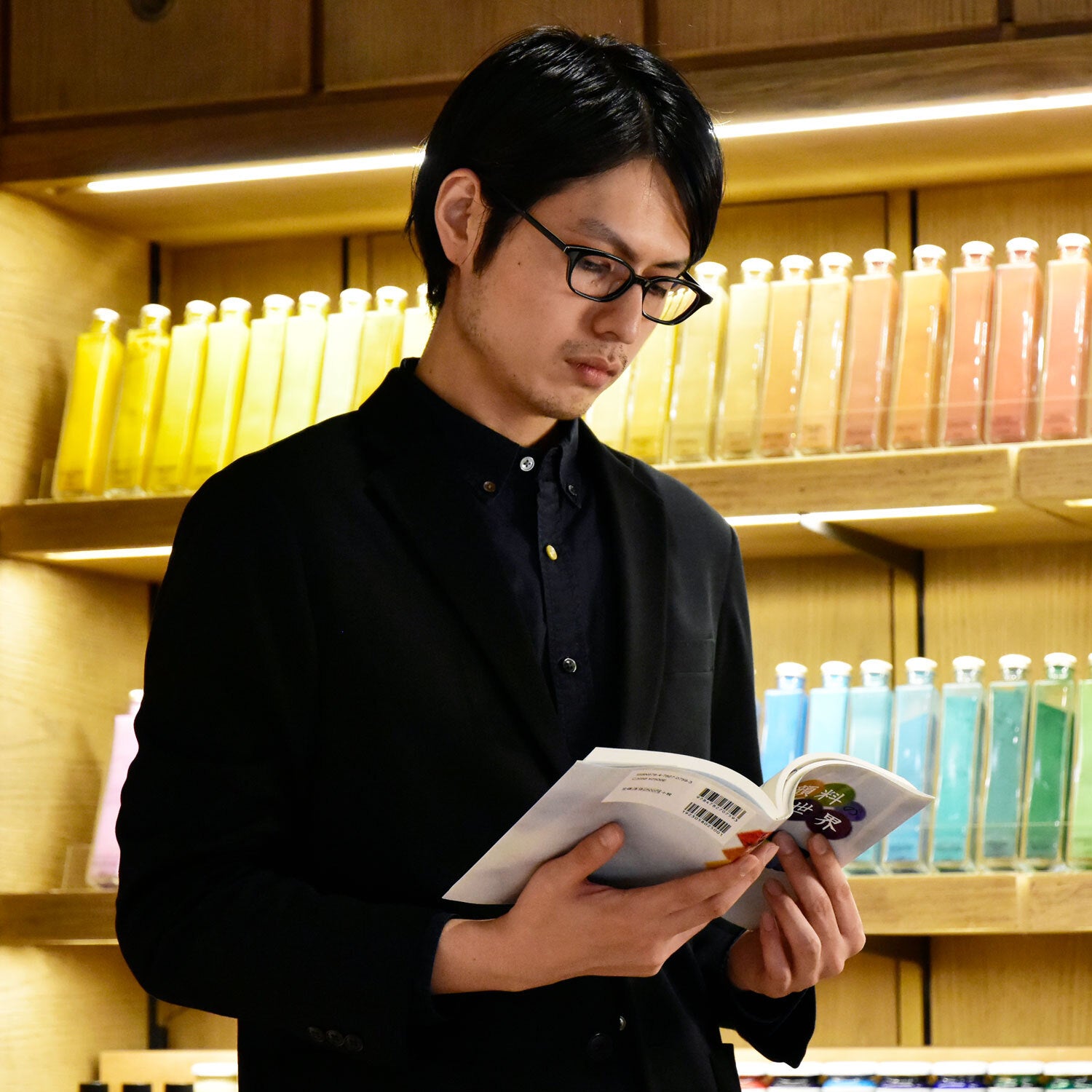Pink is most often produced by mixing red and white pigments but some single pigments can produce a pink color without mixing.
For example, some of the natural mineral pigments used in Nihonga (Japanese painting) such as Kougyokumatsu and Tourensekimastu have beautiful pink colors.
However, since these mineral pigments are ground ore, they are just like “color sands.”
The size of each particle is relatively large so if you use the pigments lower than No. 10, the painted surface will result in a sand-painting-like texture.
Since binders with weak fixing power, such as gum arabic, may cause peeling, it is recommended to use these pigments for rough textured expressions like Japanese painting in which the binder is Nikawa (animal glue.)
When making transparent watercolors with gum arabic and wanting to use a single pink pigment, the pigment I would suggest is Potter's Pink.
This article will explain the properties, history, usage and color mixing techniques of this pigment.
Potter's Pink is a pigment discovered in the 18th century by a potter living in Staffordshire, in the West Midlands of England. The C.I. Name (Color Index Name) used for this pigment is PR233.
This pigment has low toxicity and high lightfastness which makes it very easy to handle. Moreover, its opacity is semi-transparent. Therefore, the influence of this pigment on watercolor painting is particularly significant and it is the one and only pink pigment with high lightfastness.
The below image is how its color actually appears.
【Art Materials Used】
Color Materials: Potter's Pink Red Shade, Potter's Pink
Binder: Gum Arabic Medium (watercolor medium)
Substrate: Bamboo Washi for Watercolor
As you can see in the above color samples, they have slightly lower saturated pink colors.
The fascinating thing about these pigments is the graininess. Because of their unique shades, they could be used to mix with other colors to decrease their saturation or to give a sandy-like texture to the painting surfaces instead of using them as accent colors.
Although the color is named pink, Potter's Pink Red Shade also has an earthy tone, so it can be mixed with vivid colors to create neutral colors, such as skin tones.
Inorganic pigments have the unique feature that they do not have a strong influence on other colors when compared to organic pigments.
Moreover, when gum arabic is used as the binder to paint on watercolor papers that absorb water, the irregular texture creates a color separation effect. The colors that can create this effect are called granulation colors.
Potter's pink is also used in the Harmonia series, a tube paint called "Chiffon Pink," which is another type of granulation watercolor released by Kusakabe Co.
“Harmonia (Transparent Watercolors) Plus" also contains this color, so feel free to give this palette a try if you’re interested!
Harmonia (Transparent Watercolors) Plus
Of course, these two pigments can be mixed with different binders other than Gum Arabic, but the grainy texture of these pigments might not appear as obvious depending on the binders.
Therefore, there is a pigment called Pink Madder, which has a different composition but is also pink in color. Because of its vivid color and durability, it is used not only for paintings, but also in the printing industry.
If you are looking to add pink to your color palette, these Potter's Pink and Pink Madder pigments are highly recommended.
You can order these pigments through our online store from all over the world, so feel free to give them a try!
References
Liz Steel, Potter's Pink, https://www.lizsteel.com/potters-pink/, ( Date viewed:2023-04-05)
Jackson's Art Supplies, The History of Potter's Pink and Why It's a Watercolourist's Secret Weapon,https://www.jacksonsart.com/blog/2023/01/29/the-history-of-potters-pink-and-why-its-a-watercolourists-secret-weapon/, ( Date viewed:2023-04-05)
Paint Library, PR233 - Potter's Pink,https://www.paintlibrary.art/pigments/red/PR233, ( Date viewed:2023-04-05)
Translated by Atsumi Okano and Nelson Hor Ee Herng
PIGMENT TOKYO Art Materials Experts





